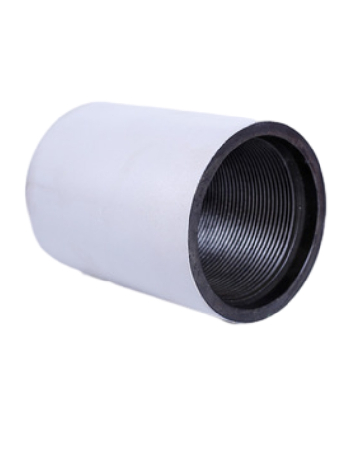- Afrikaans
- Albanian
- Amharic
- Arabic
- Armenian
- Azerbaijani
- Basque
- Belarusian
- Bengali
- Bosnian
- Bulgarian
- Catalan
- Cebuano
- Corsican
- Croatian
- Czech
- Danish
- Dutch
- English
- Esperanto
- Estonian
- Finnish
- French
- Frisian
- Galician
- Georgian
- German
- Greek
- Gujarati
- Haitian Creole
- hausa
- hawaiian
- Hebrew
- Hindi
- Miao
- Hungarian
- Icelandic
- igbo
- Indonesian
- irish
- Italian
- Japanese
- Javanese
- Kannada
- kazakh
- Khmer
- Rwandese
- Korean
- Kurdish
- Kyrgyz
- Lao
- Latin
- Latvian
- Lithuanian
- Luxembourgish
- Macedonian
- Malgashi
- Malay
- Malayalam
- Maltese
- Maori
- Marathi
- Mongolian
- Myanmar
- Nepali
- Norwegian
- Norwegian
- Occitan
- Pashto
- Persian
- Polish
- Portuguese
- Punjabi
- Romanian
- Russian
- Samoan
- Scottish Gaelic
- Serbian
- Sesotho
- Shona
- Sindhi
- Sinhala
- Slovak
- Slovenian
- Somali
- Spanish
- Sundanese
- Swahili
- Swedish
- Tagalog
- Tajik
- Tamil
- Tatar
- Telugu
- Thai
- Turkish
- Turkmen
- Ukrainian
- Urdu
- Uighur
- Uzbek
- Vietnamese
- Welsh
- Bantu
- Yiddish
- Yoruba
- Zulu
Understanding Tubing and Casing Specifications for Oil and Gas Applications
Understanding API Tubing and Casing Charts
In the oil and gas industry, the proper selection and understanding of tubing and casing is crucial for the successful extraction of resources. The American Petroleum Institute (API) provides standardized charts and specifications for various components used in drilling operations, particularly focusing on tubing and casing. This article will explore the significance of API tubing and casing charts and how they contribute to effective drilling practices.
What is Tubing and Casing?
Before delving into the API charts, it is important to understand what tubing and casing are. Casing refers to the series of steel pipes that are inserted into a borehole to stabilize its walls and protect groundwater from contamination. Tubing, on the other hand, is used to transport oil and gas from the production zone to the surface.
Casing is typically installed first during the drilling process, with various sizes and grades available to accommodate different pressures and environmental conditions. Tubing is then installed inside the casing for production purposes. Both tubing and casing must meet stringent standards to ensure safety and efficiency.
API Standards and Specifications
The API has established a range of standards for tubing and casing that specify the dimensions, materials, and performance characteristics of these components. The API charts include important information such as the outside diameter, wall thickness, and yield strength of various sizes and grades of tubing and casing. This information is vital for engineers and drillers in order to make informed decisions regarding the selection of the right components for their drilling operations.
api tubing and casing chart

For example, API casing specifications indicate what grades of steel are suitable for different conditions, such as high-pressure environments or corrosive materials. Moreover, the charts provide details about the length of each pipe section and the thread type used for connections, ensuring a proper fit and reducing the risk of leaks.
Significance of API Charts in Drilling Operations
The importance of API tubing and casing charts in drilling operations cannot be overstated. Proper selection of casing and tubing is essential for maintaining well integrity and preventing blowouts. Using the wrong size or grade of tubing or casing can lead to catastrophic failures, excessive repair costs, and, in some cases, environmental disasters.
Additionally, the API charts help in the optimization of production efficiency. By selecting the appropriate tubing size, operators can maximize the flow rate of oil and gas coming from the well. This efficiency translates into better economic returns and can significantly affect the overall viability of a drilling project.
Conclusion
In summary, API tubing and casing charts are indispensable tools in the oil and gas industry. They provide critical specifications that ensure the safe and efficient extraction of resources. Understanding these charts is essential for engineers and drillers who strive to maintain well integrity and optimize production performance. As the industry continues to evolve, the reliance on these standards will only increase, further emphasizing the need for professionals to stay informed about the latest API specifications and best practices in casing and tubing selection. Adhering to these guidelines not only promotes operational efficiency but also protects the environment and the communities surrounding drilling sites.
-
Tubing Pup Joints: Essential Components for Oil and Gas OperationsNewsJul.10,2025
-
Pup Joints: Essential Components for Reliable Drilling OperationsNewsJul.10,2025
-
Pipe Couplings: Connecting Your World EfficientlyNewsJul.10,2025
-
Mastering Oilfield Operations with Quality Tubing and CasingNewsJul.10,2025
-
High-Quality Casing Couplings for Every NeedNewsJul.10,2025
-
Boost Your Drilling Efficiency with Premium Crossover Tools & Seating NipplesNewsJul.10,2025







